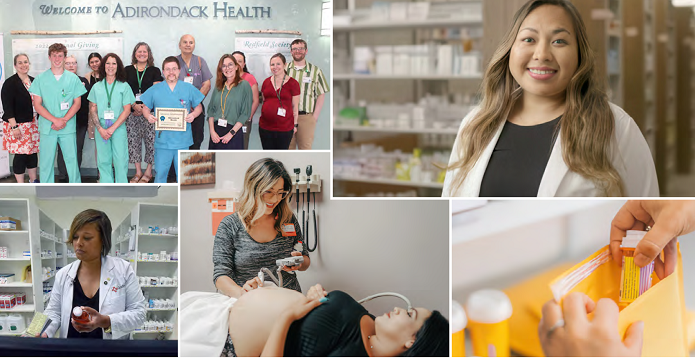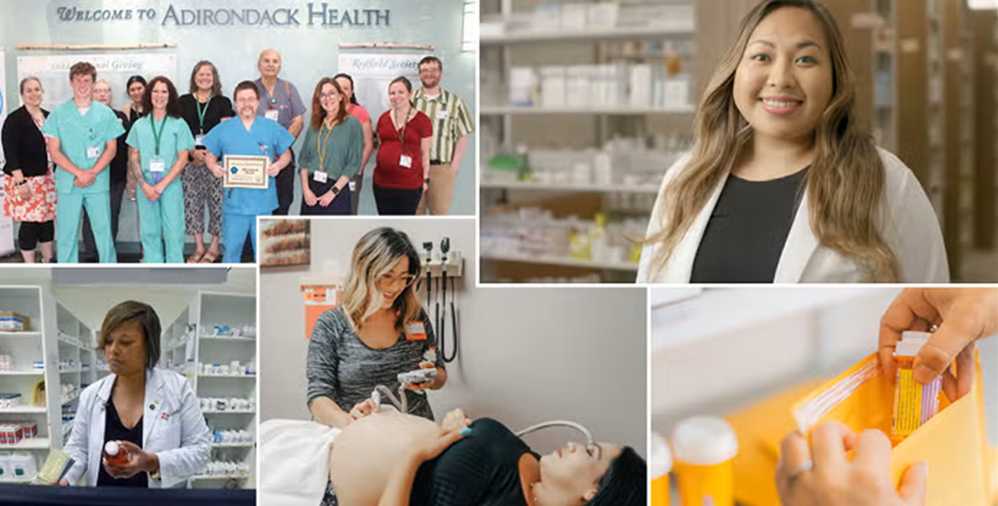

340B Benefits Patients and Communities: Examples from the Frontlines

The 340B Drug Pricing Program helps ensure access to care for patients and communities most in need. A bipartisan effort by Congress in 1992 designed the program to protect hospitals from rising drug costs — a dynamic that continues to present major challenges today. Under the program, eligible hospitals and other providers purchase certain outpatient drugs at a discounted price, dispense these drugs to patients through either an in-house pharmacy or through a partnership with a community or specialty pharmacy, and then use the savings to maintain, improve and expand access to programs and services targeted to address the unique needs of the patients and communities they serve.
340B Program Fast Facts
![]()
Drug companies provided an estimated $46.5 billion in discounts to 340B hospitals in 2022, which was only 3% of their global revenues.
![]()
There are 2,700 340B hospitals across the U.S., including over 1,200 critical access hospitals; about 60% serve predominantly rural areas.
![]()
340B hospitals provided nearly $85 billion in total community benefits in 2020, demonstrating their commitment caring for the communities they serve. <>/p>
Drug Discounts for Low-income Patients
Grady Memorial | Georgia
 Thanks to the savings generated by the 340B program, no uninsured patient ever pays more than $5 for any formulary prescription at Grady pharmacies. In 2023, Grady provided nearly 900,000 low-cost prescriptions to patients, some of whom were referred to Grady by other providers due to their financial situation.
Thanks to the savings generated by the 340B program, no uninsured patient ever pays more than $5 for any formulary prescription at Grady pharmacies. In 2023, Grady provided nearly 900,000 low-cost prescriptions to patients, some of whom were referred to Grady by other providers due to their financial situation.
Our Lady of the Lake | Louisiana
 OLOL ensures uninsured patients pay an average of $7.77 for retail prescriptions and $48.05 for specialty medications compared to the non-340B price of $78.13 and $3,937.10, respectively. Further, OLOL offers free delivery of medications to low-income neighborhoods in the greater Baton Rouge area.
OLOL ensures uninsured patients pay an average of $7.77 for retail prescriptions and $48.05 for specialty medications compared to the non-340B price of $78.13 and $3,937.10, respectively. Further, OLOL offers free delivery of medications to low-income neighborhoods in the greater Baton Rouge area.
Medication Management
Renown Regional | Nevada
 Renown Health has implemented a Meds-to-Beds Program, which offers bedside medication delivery to patients who are being discharged from the hospital and cannot afford their medications. This helps reduce the likelihood of readmissions and improves overall patient outcomes.
Renown Health has implemented a Meds-to-Beds Program, which offers bedside medication delivery to patients who are being discharged from the hospital and cannot afford their medications. This helps reduce the likelihood of readmissions and improves overall patient outcomes.
Labor and Delivery
Golden Valley Memorial Healthcare | Missouri
 GVMH provides high-quality maternity care, accounting for roughly 350 births each year. This is particularly important for the rural population it serves, which otherwise would have to drive over 90 minutes to reach the next nearest birthing center.
GVMH provides high-quality maternity care, accounting for roughly 350 births each year. This is particularly important for the rural population it serves, which otherwise would have to drive over 90 minutes to reach the next nearest birthing center.
Nutrition & Diabetes Awareness
Valleywise Health | Arizona
 Providing community members with tools and resources to prevent the onset of diabetes and other chronic conditions is vital. In 2020, Valleywise partnered with Arizona Women’s Board and St. Mary’s Food Bank to launch the Valleywise Community Health Center — a food pharmacy program that, through the help of 340B savings, supports residents of one of the most economically disadvantaged areas in Phoenix at greatest risk for diabetes and related health conditions.
Providing community members with tools and resources to prevent the onset of diabetes and other chronic conditions is vital. In 2020, Valleywise partnered with Arizona Women’s Board and St. Mary’s Food Bank to launch the Valleywise Community Health Center — a food pharmacy program that, through the help of 340B savings, supports residents of one of the most economically disadvantaged areas in Phoenix at greatest risk for diabetes and related health conditions.
Mental Health and Substance Use Disorders
University of Louisville Health | Kentucky
![]() Hit hard by the addiction and drug overdose epidemic, Kentucky providers are working hard to address substance use disorder needs. Supported by 340B savings, UofL Health maintains medical detox and long-acting injection clinics and operates one of the largest psychiatric hospitals east of the Mississippi River for patients with emergent behavioral health needs.
Hit hard by the addiction and drug overdose epidemic, Kentucky providers are working hard to address substance use disorder needs. Supported by 340B savings, UofL Health maintains medical detox and long-acting injection clinics and operates one of the largest psychiatric hospitals east of the Mississippi River for patients with emergent behavioral health needs.
Patient Support Services
Adirondack Health | New York
 Adirondack Health's Merrill Center for Oncology is the only outpatient oncology department in the Adirondacks, serving rural residents with chemotherapy and infusion therapies for cancer and blood disorders. Supported by 340B savings, Adirondack Health also supports the oncology travel fund, which offers financial and travel assistance to rural cancer patients who must travel far distances and navigate mountainous terrain to reach the facility.
Adirondack Health's Merrill Center for Oncology is the only outpatient oncology department in the Adirondacks, serving rural residents with chemotherapy and infusion therapies for cancer and blood disorders. Supported by 340B savings, Adirondack Health also supports the oncology travel fund, which offers financial and travel assistance to rural cancer patients who must travel far distances and navigate mountainous terrain to reach the facility.


